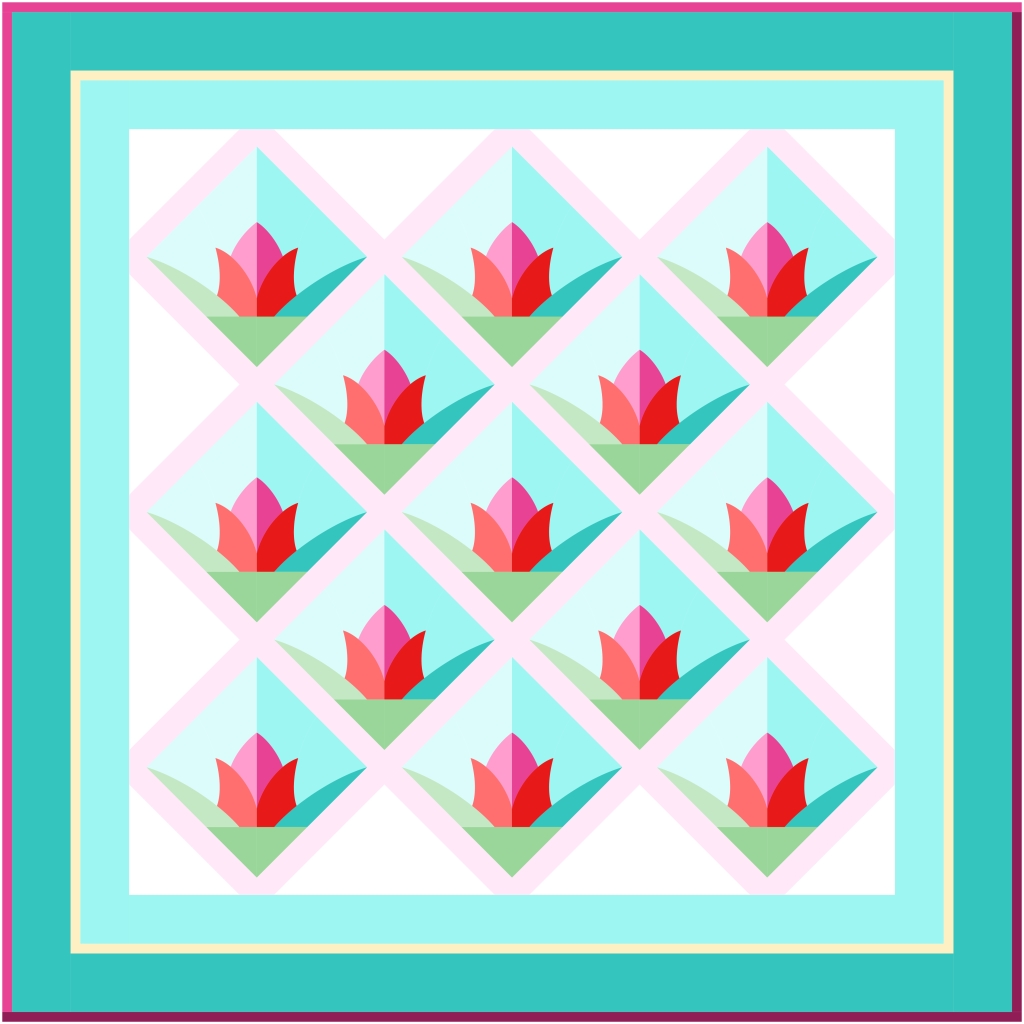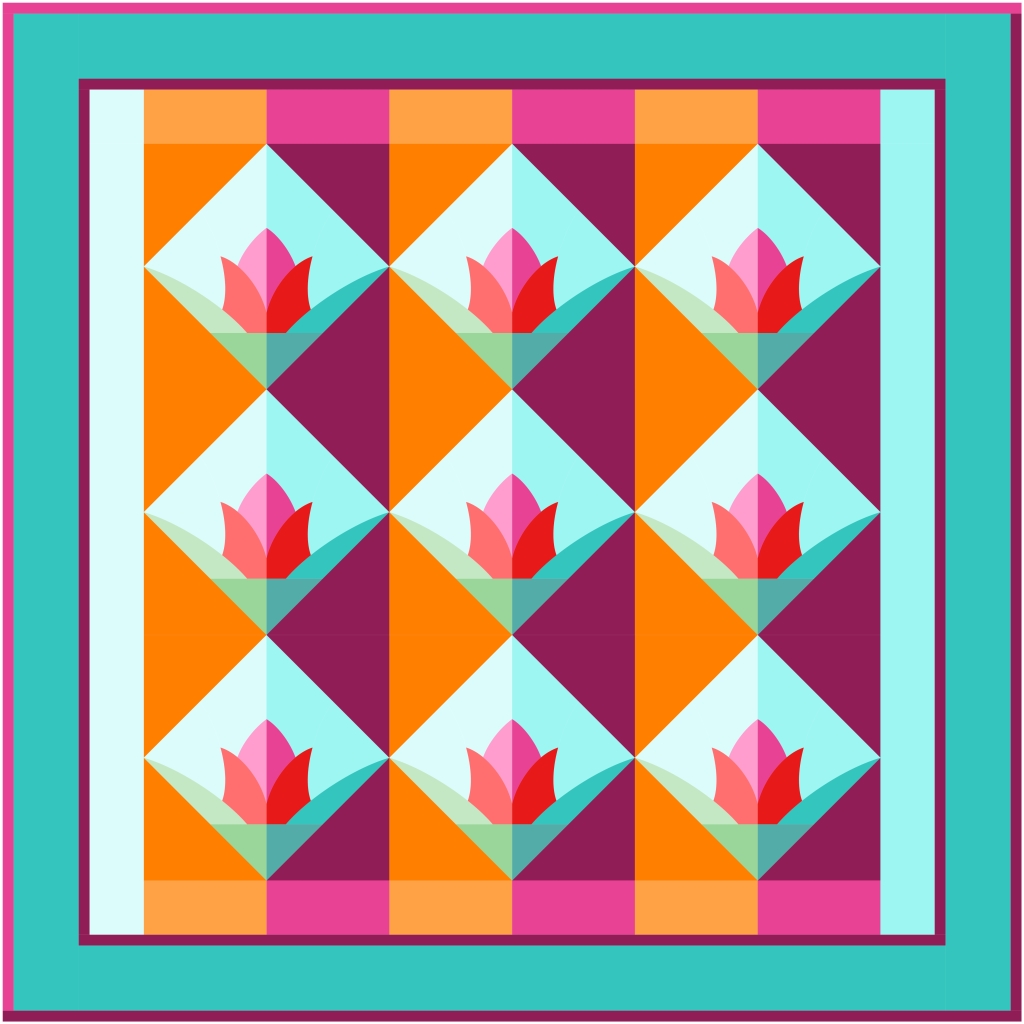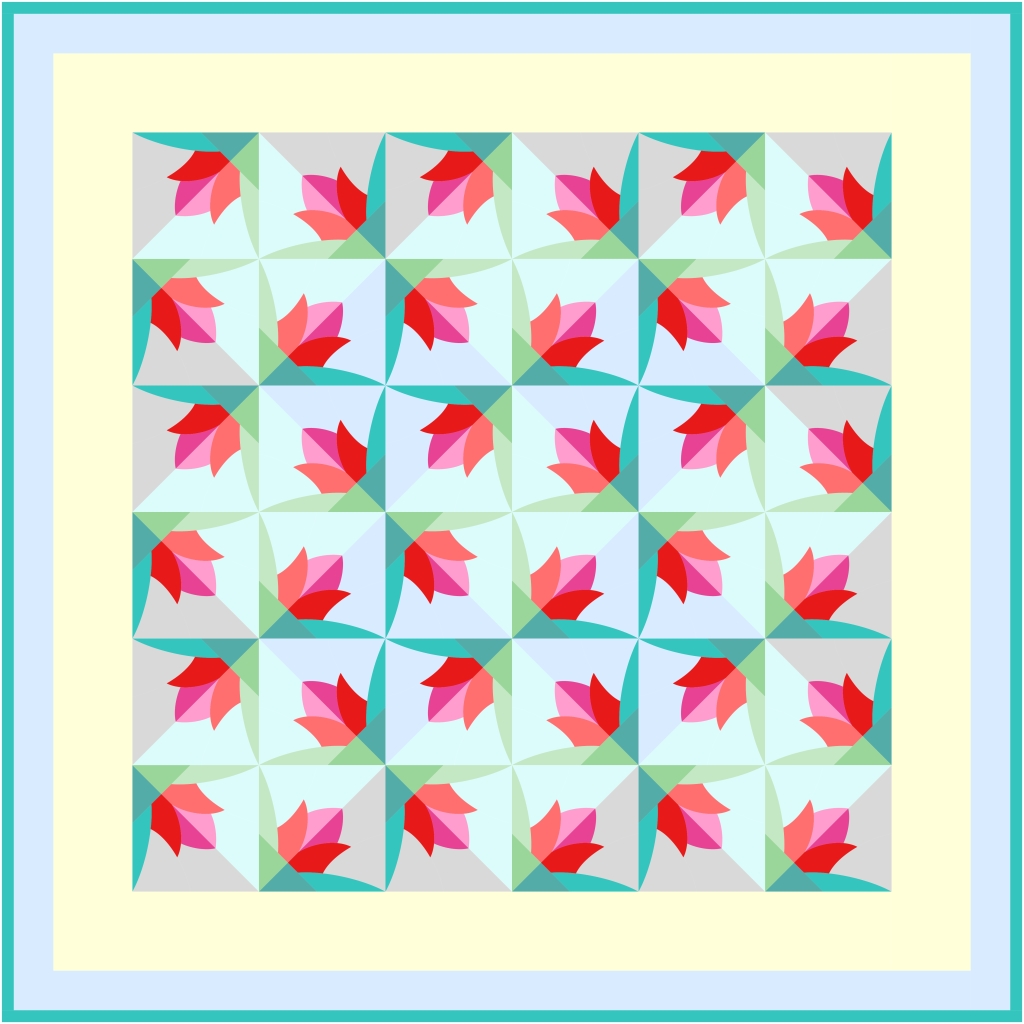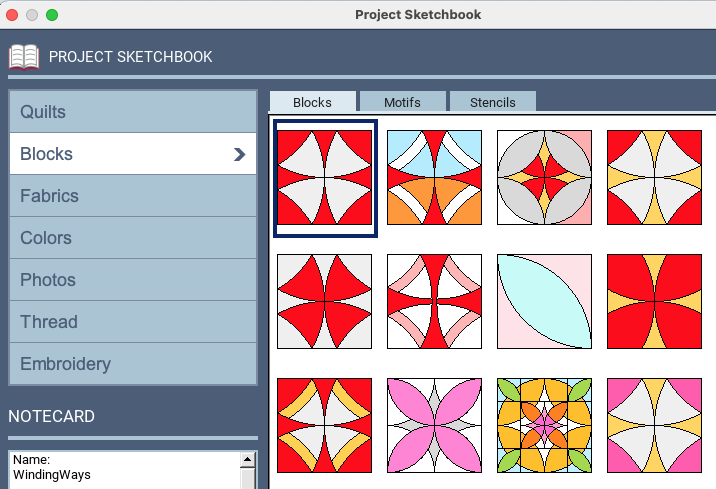
Linda Franz released a new Inklingo shape collection, perfect for Spring! It is the classic Tulip Patch. In my quilt designs, it may look like appliqué, but it is entirely pieced!
I traced a picture of the block in EQ8, to play with quilt designs. My EQ block is not entirely symmetrical, so it isn’t accurate, but good enough for design purposes.
It’s a very nice block for hand piecing or hybrid piecing (meaning, I would not want to piece the inset seams by machine). Linda has provided a great illustration of the piecing order in the shape collection, and proved machine piecing this block is absolutely doable, even for a 12-year old beginner! Well, I am in awe of this young man!
I hope to inspire you with some pretty pictures of quilt designs with this block. I took a liberty and drafted a variation block, too. Can you spot what I added in the picture below?

From a coloring point of view (not the piecing point of view), it made sense to me to add a seam line in the ‘bottom triangle’. It allows for transparency effects, and playing with light and dark. Now, these half triangles F are not actually in the shape collection. Looking at a picture of the 8 inch [20,3 cm.] block, I am guessing triangle F is about a 3.75 inch half square triangle (HST). To split it and still have straight of grain on the outside, you would need two 3.75 inch quarter square triangles (QST’s.)
In the index of Inklingo shapes I found several Inklingo shape collections with 3.73 inch QST’s. Depending on the accuracy of my estimated size, it could be usable (or it could be too small).
The next bigger size QST available as Inklingo shape is 4.24 inch. That really is too big, but you could always use them if ‘necessary’. Just piece them together, line up the center seams with the rest of the pieced block, and trim the outside of the block afterwards.


Well, I hope this put you in the mood for sewing Spring Quilts! The shape collection has a special introductory price until 28 of March 2024.
And Linda is even offering a flash sale of her wonderful book ‘Winding Ways – Quilting the Inklingo Way’, for both the download and the hard copy version. It is a great resource for every quilter, and especially with the Tulip Patch shape collection. The book has great tips and includes sewing instructions for piecing curves.
XXX Annika







































